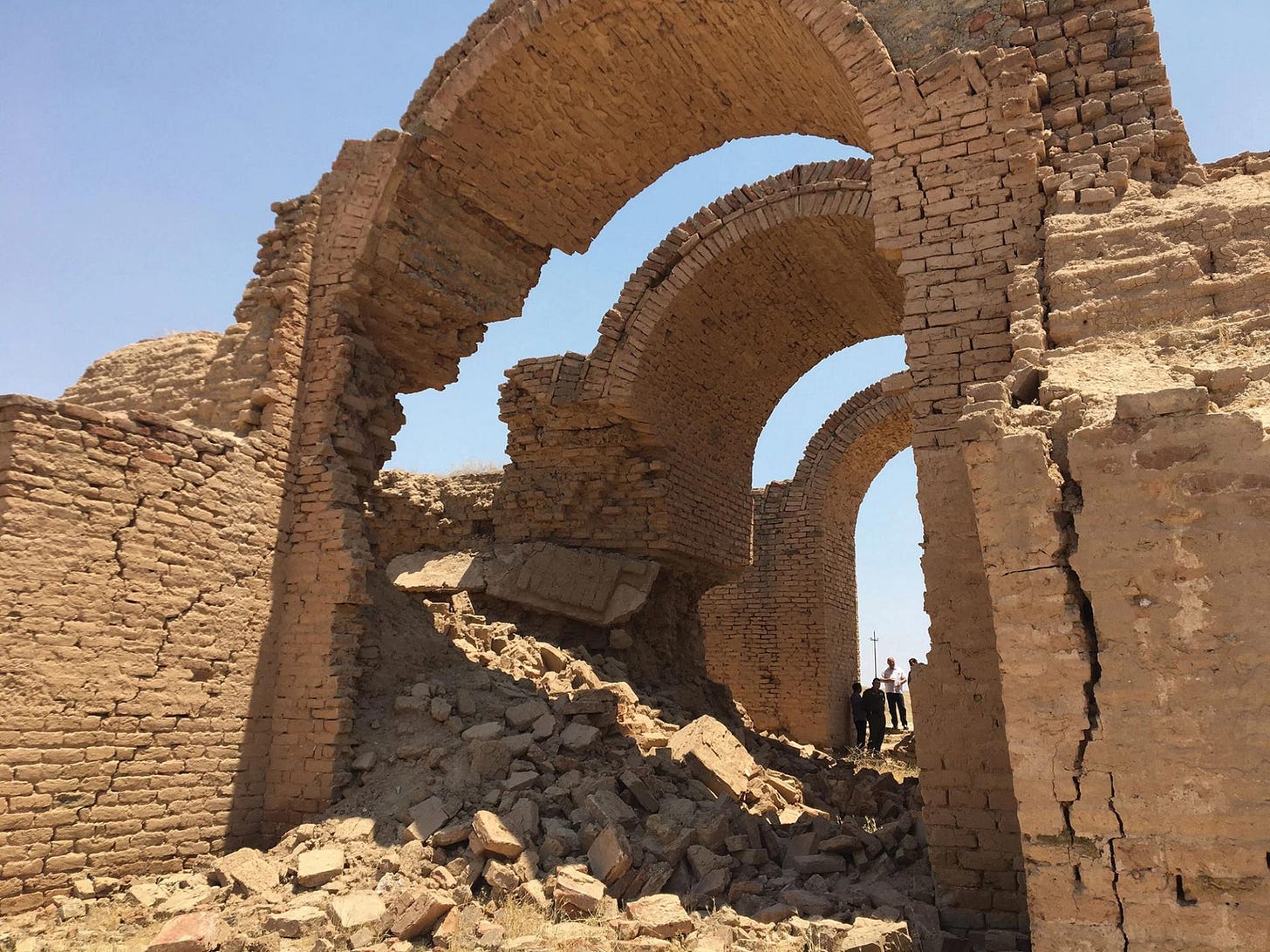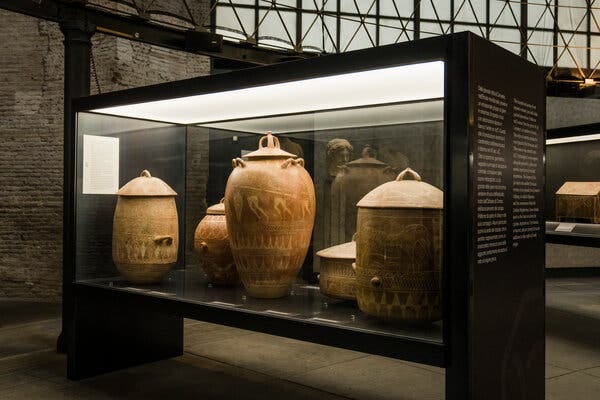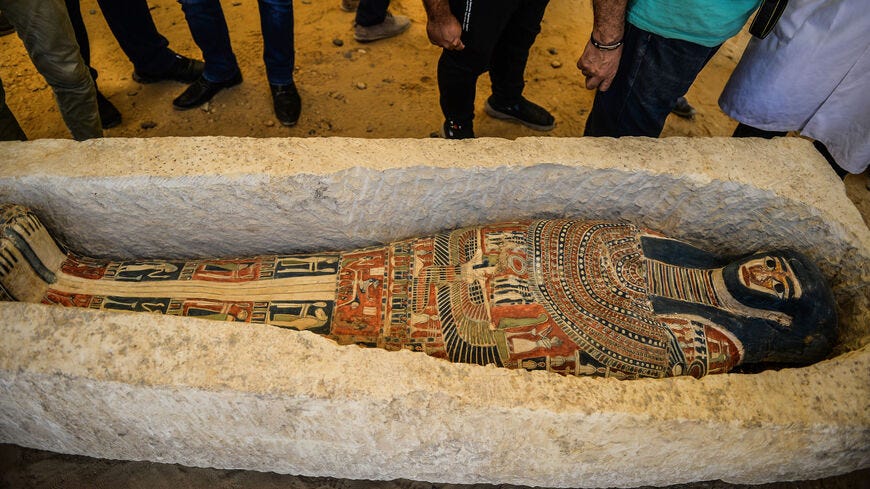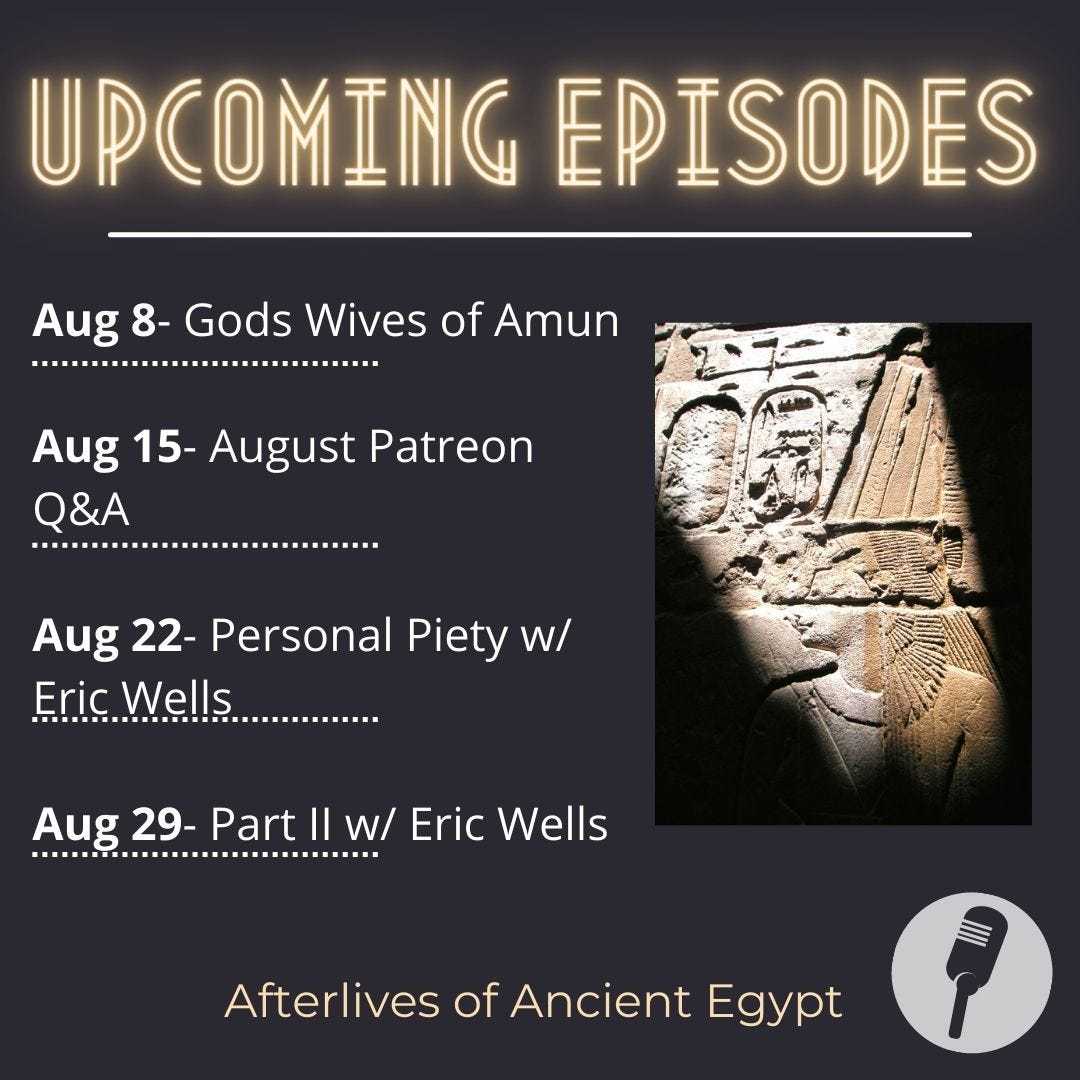Weekly Roundup- July 29th
This week we cover humans destroying ancient monuments (no surprise there), repatriation, and ancient illness, amongst other topics. Oh, and podcast updates!
Afterlives of Ancient Egypt Update
We have a lot of great episodes scheduled for the month of August and as a special treat to our loyal listeners— one every week!! Also please note the appearance of the illustrious Dr. Wells, known to and beloved by many for his podcast from a few years ago!
We just released our 30th episode! If you are enjoying our podcast please like, subscribe, and leave us a review.
Hagia Sophia’s Marble Floors Suffer “Tremendous Damage,” Reports Say
There are reports circulating that the Hagia Sophia is showing cracks and damage on its marble floors from an increase in visitors to the site. Many of the reports are coming out of the Greek media, which as you know is not supportive of the conversion of the building back to a functioning mosque in 2020.
However, other more impartial organizations are concurring with these reports that the building has since been vandalized and local tour guides have been quoted wishing for the return to museum-status.
The future of the Hagia Sophia remains to be seen. As a UNESCO World Heritage site one would think think there are certain stipulations and regulations. But what is clear is that the controversial nature of the site is on going. We never seem to stop arguing over important buildings, and this one has seen its share…

New dam could drown ancient Iraqi city of Ashur
The 5,000 year old city of Ashur on the banks of the Tigris river is facing a new threat—not ISIL this time— but a new dam 25 miles away that would submerge the ancient city. With the unclear political situation in the region, many local archaeologists are rightfully concerned.
Khalil Aljbory, a researcher in archaeology at Tikrit University, has long studied the sociological effects of the dam on the local region. “The impact of the dam’s construction has not been sufficiently studied, and to date there have been no social or environmental impact surveys carried out.”
Obviously people in the region need access to water and electricity, but at what cost? With the advancement of anthropogenic- fueled climate change around the world, we will be increasingly forced to make such tough decisions. Who matters more—the ancient past or the current generation?

In Rome, a New Museum for Recovered Treasures Before They Return Home
A new museum in Rome has been opened— the Museo dell’Arte Salvata, The Museum of Recovered Art. The museum takes a broad understanding of “recovered art,” with objects salvaged from natural disasters, the illicit trade, shipwrecks and time.
The first exhibition, however, focuses on the recovery of looted art and the role of the Carabinieri Command for the Protection of Cultural Heritage. The next exhibition will focus on 20 pieces including a Pithos jar recently returned from the Getty museum.
The growing illegal arts and artifacts trade is something to keep an eye one with more and more instances coming to light as of late. Never forget that such trade involves so much more than ancient things; antiquities are perfect ways to launder large sums of cash that can be used for human trafficking, arms sales, and illegal drug trades. Its a dirty business wrapped up in beautiful objects…

Why archaeology needs to come out of the cave and into the digital age
This great pieces by Becky Wragg Sykes, author of Kindred: Neanderthal Life, Love, Death, and Art (Jordan loved this book!), discusses the role of genetics research in archaeology. DNA and genomic studies has provided clear, indisputable answers to debates that have been raging for centuries, often based in racist ideologies and white supremacist frameworks—like the Solutrean hypothesis.
Another recent publication, Origins: A Genetic History of the Americas by Jennifer Raff (also beloved by Jordan) also tackles this topic, succinctly showing how genetic evidence supports an earlier migration of Paleo-Siberians into the Americas, much earlier than the Clovis culture, supporting much maligned sites like White Sands and Meadowcroft Rockshelter, amongst others.

Mummy paints picture of stroke treatment in ancient Egypt
Researchers has found evidence for a ischemic stroke in an Egyptian mummy dating to the 25th dynasty. And better yet— there is evidence for rehabilitation. The individual suffered the stroke as a young age but did not die until she was a fully matured adult. The stroke would have left the individual disabled and shows to us how her family and community would have aided in her rehabilitation. Humans can be kind!
Ancient Disability studies is a growing field with further work needed, but this is another great piece of evidence to demonstrate the level of care, both medically and socially, available during that time period.








